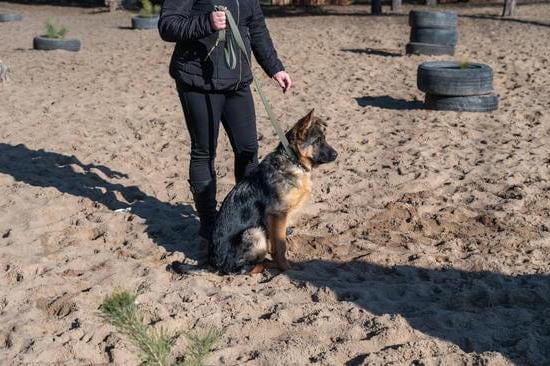Are you wondering how to train your dog with an electric fence? Electric fences are a popular and effective tool for training dogs to stay within a certain boundary without the need for physical barriers. This article will provide you with essential tips and best practices for successful electric fence training.
Training your dog with an electric fence offers several benefits. It provides a safe and reliable way to keep your dog within a designated area, allowing them the freedom to roam while ensuring their safety. Additionally, electric fence training can be more convenient than traditional fencing, especially for larger properties. With the right approach, electric fence training can create a sense of security and independence for your dog while giving you peace of mind.
In this article, we will delve into the various aspects of training your dog with an electric fence, including understanding your dog’s behavior, setting up the electric fence, initial training, reinforcement techniques, troubleshooting common challenges, preparing your dog to be off-leash, and maintenance and safety tips for long-term success.
Whether you’re new to electric fence training or looking to improve your existing methods, this comprehensive guide will help you and your furry friend achieve success with this innovative training approach.
Understanding Your Dog’s Behavior and Testing the Fence
Understanding Your Dog’s Behavior
Before you begin training your dog with an electric fence, it’s important to understand your dog’s behavior. Every dog has a unique personality and level of sensitivity, so it’s crucial to consider this when introducing them to the electric fence system. Some dogs may be more cautious and sensitive, while others may be more confident and less responsive to the deterrent.
Testing the Fence
Once you have set up the electric fence, it’s essential to test the boundaries yourself before introducing your dog to the system. Walk along the perimeter of the fence with the collar in hand to determine where the signal is being transmitted. This will allow you to understand the range of the fence and ensure that it is working properly.
Introducing Your Dog to the Electric Fence Collar
When introducing your dog to the electric fence collar, it’s essential to do so in a calm and controlled environment. Begin by allowing your dog to become familiar with the collar by placing it on them without activating it. This will help them get used to wearing the collar before they associate it with any correctional signals. Slowly introduce them to the correctional signal by using a low setting, allowing them to learn what sensation corresponds with crossing boundaries.
By understanding your dog’s behavior and carefully testing the fence, you can effectively prepare for training your dog with an electric fence system. It is important to introduce your dog gradually and patiently so they can adapt comfortably and successfully respond to their new boundary training.
Setting Up the Electric Fence
Once you have decided to train your dog with an electric fence, it’s important to ensure that the set-up is done correctly to maximize its effectiveness. First, it is essential to carefully read the manufacturer’s instructions and understand how the system works. This includes learning about the different levels of stimulation and how to adjust them based on your dog’s size and temperament.
When placing the boundary wire for the electric fence, make sure to choose a location that allows for a clear and consistent signal. Avoid areas with large metal objects or interference from other electrical devices. It’s also crucial to bury the wire at least 1-3 inches underground to prevent any accidental damage or tripping hazards.
In addition, consider using training flags during the initial set-up phase. These can serve as a visual cue for your dog, helping them understand where the boundaries lie. This can be especially helpful for dogs who are more visually oriented in their learning style. With these tips in mind, setting up your electric fence correctly will lay a strong foundation for successful training.
| Electric Fence Set-Up Tips | Best Practices |
|---|---|
| Read manufacturer’s instructions | Choose a clear and consistent signal location |
| Bury wire underground | Consider using training flags |
Initial Training
Training your dog to understand the boundaries of an electric fence is crucial for their safety and your peace of mind. By following a few key steps, you can effectively teach your dog to respect the electric fence boundary and enjoy the freedom of roaming within a safe area.
Understanding Your Dog’s Behavior
Before beginning the training process, it’s important to take note of your dog’s behavior. Understanding how they respond to new stimuli and their individual temperament will help you tailor the training to best suit their needs. Some dogs may be more sensitive to the electric stimulation, while others may require a firmer approach.
Testing the Fence
Before introducing your dog to the electric fence, it’s essential to test it yourself. This will give you a better sense of how strong the electric stimulation is and what your dog will experience. Walking along the boundary with caution, verifying that both visual and auditory cues are present, and identifying any potential weak spots in the fence will help ensure its effectiveness.
Introducing Your Dog to the Boundary
Begin by putting your dog on a leash and walking them along the perimeter of the electric fence. As they approach or attempt to cross it, they will receive a mild static correction from their collar. Pair this with firm verbal commands such as “stop” or “back” so that they begin associating these with staying within bounds.
Gradually increase their exposure time along different parts of the boundary until they effectively understand where they can roam freely. Be patient and consistent during this initial phase.
By following these steps, you can successfully train your dog with an electric fence and provide them with an area in which they can safely explore without fear of wandering off too far.
Reinforcing Boundaries and Correcting Misbehavior
Once your dog has become familiar with the electric fence boundary and is responding to it appropriately, it’s important to reinforce these boundaries and address any misbehavior that may arise. Consistency is key when it comes to electric fence training, and properly reinforcing the boundaries will help your dog understand the consequences of crossing them.
Here are some tips for reinforcing boundaries and correcting misbehavior with an electric fence:
- Consistent Training: Continue to train your dog by regularly walking the perimeter of the electric fence with them. Use verbal cues and positive reinforcement to remind them of the boundary.
- Correcting Misbehavior: If your dog attempts to cross the electric fence boundary, they will receive a mild static correction. It’s important not to punish or scold your dog after they receive a correction, as this can cause confusion and anxiety.
- Positive Reinforcement: When your dog responds appropriately to the electric fence boundary, be sure to praise them and offer treats as a reward. This will help reinforce their understanding of the boundary.
Remember that every dog is different, so some may require more time and patience when it comes to reinforcing boundaries and correcting misbehavior with an electric fence. Pay attention to your dog’s body language and behavior, and adjust your training approach accordingly.
Ultimately, reinforcing boundaries and addressing misbehavior with an electric fence requires consistent training, positive reinforcement, and patience. With time and effort, you’ll help your dog understand their boundaries while allowing them the freedom to roam within a safe area.
Troubleshooting
Even with the best planning and training, there may be some common challenges that you encounter when using an electric fence to train your dog. One of the most common issues is when your dog seems to ignore the boundaries set by the electric fence. This can be frustrating for pet owners, but there are several steps you can take to address this challenge.
First, check the settings on your electric fence to ensure that the shock level is appropriate for your dog’s size and temperament. Some dogs may need a higher level of correction, while others may be sensitive to even a low level of shock. It’s important to find the right balance to effectively train your dog without causing them unnecessary stress or pain.
Another common challenge is when your dog becomes anxious or fearful of the electric fence. This can happen if they receive a shock that startles them, or if they have a negative association with the boundary area. In this case, it’s crucial to recondition your dog to view the boundary in a positive light. Spend time playing and giving treats near the boundary so that they come to associate it with good things.
Finally, some dogs may try to test the boundaries of the electric fence by running through it or finding ways to escape. If this happens, it’s important to immediately correct this behavior and reinforce the training. You may need to supervise your dog closely during this initial phase of training and use long leash sessions as a way of reinforcing boundaries.
| Common Electric Fence Training Challenges | Troubleshooting Tips |
|---|---|
| Dog ignoring boundaries | Check shock level settings, retrain using positive reinforcement |
| Dog becoming anxious or fearful | Recondition with positive associations near boundary area |
| Dog testing boundaries and attempting escape | Supervise closely, reinforce training with long leash sessions |
Gradual Independence
Once your dog has become familiar with the electric fence and has learned to respect its boundaries, you can start preparing them for off-leash freedom within the confines of the fence. This is an exciting milestone in electric fence training, as it gives your dog more mobility while still ensuring their safety. Here are some tips for gradually transitioning your dog to be off-leash with the electric fence:
- Start by allowing your dog off-leash in a controlled environment within the fenced area, such as a small enclosed yard or a designated space where you can closely supervise them.
- Use positive reinforcement and rewards to encourage your dog to stay within the boundaries of the electric fence. Praise them when they respect the invisible barrier and redirect them back inside if they attempt to cross it.
- Practice recall exercises with your dog while they are off-leash within the electric fence boundary. This will help reinforce their understanding of staying within the designated area even without a physical barrier like a leash.
As your dog becomes more comfortable and reliable at staying within the electric fence boundaries while off-leash, you can gradually increase their independence. However, it’s important to remember that every dog is different, and some may require more time and practice before being fully trusted off-leash with an electric fence. Be patient and continue to provide consistent training and reinforcement.
Remember that ongoing supervision is essential, especially during the early stages of allowing your dog off-leash with an electric fence. Keep an eye on their behavior, and be prepared to intervene if they show signs of wanting to test or cross the boundaries. With patience and consistent training, you can eventually enjoy the freedom of having your dog roam within a defined area without needing a physical leash.
Maintenance and Safety Tips for Long-Term Success With Electric Fence Training
In conclusion, training your dog with an electric fence can be a highly effective and efficient way to establish boundaries and keep your pet safe. By understanding your dog’s behavior and carefully testing the fence, you can ensure that the training process is as smooth as possible. Setting up the electric fence correctly, along with initial training and reinforcement of boundaries, are crucial steps in this process.
As you continue with electric fence training, it’s important to be consistent and patient. Addressing common challenges such as boundary breaches or misbehavior requires proactive correction and troubleshooting. Additionally, preparing your dog for gradual independence off-leash within the electric fence boundary is essential for long-term success.
Finally, maintaining the electric fence system and adhering to safety tips are key factors in ensuring the effectiveness and safety of this training method. Regular maintenance will help prevent malfunctions or issues with the system over time, while safety measures such as supervision during initial training and ongoing monitoring of your dog’s behavior are vital for their well-being.
With these maintenance and safety tips in mind, you can achieve long-term success in training your dog with an electric fence.
Frequently Asked Questions
How Long Does It Take to Train a Dog on an Electric Fence?
Training a dog on an electric fence can take several weeks to a few months, depending on the individual dog and their temperament. It’s crucial to be consistent and patient during the training process.
How Do You Train an Electric Dog Fence?
The key to training a dog on an electric fence is positive reinforcement and consistency. Start by introducing the dog to the boundaries while using flags, then gradually introduce them to the mild electric stimulation if they cross the boundary.
Are Electric Fences Effective for Dogs?
Electric fences can be effective for many dogs when used correctly. However, some dogs may become fearful or anxious as a result of the electric stimulation. It’s essential to carefully consider your dog’s temperament and behavior before deciding if an electric fence is suitable for them.

Welcome to the blog! I am a professional dog trainer and have been working with dogs for many years. In this blog, I will be discussing various topics related to dog training, including tips, tricks, and advice. I hope you find this information helpful and informative. Thanks for reading!





